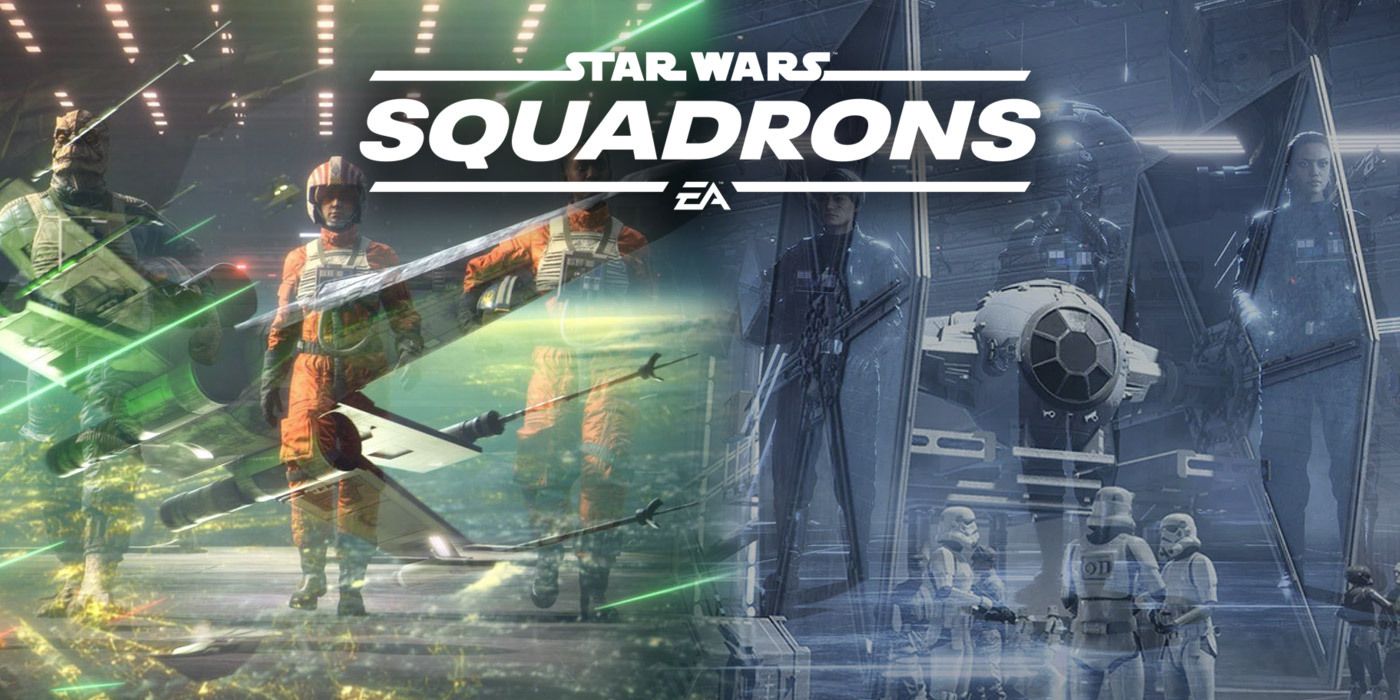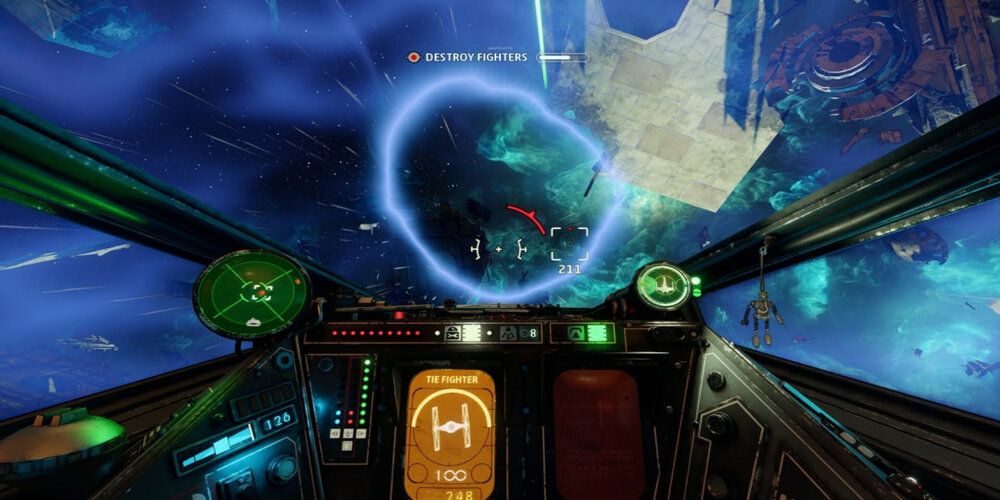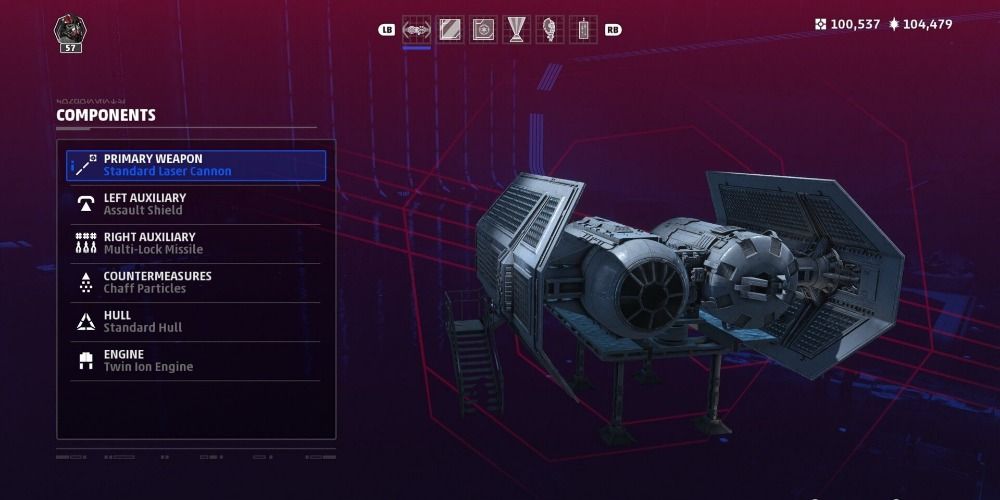Star Wars: Squadrons is the first solo outing for EA Motive, which previously collaborated with DICE and Criterion Games on Star Wars Battlefront 2. As the studio's solo debut, Star Wars: Squadrons manages to make a strong impression with a story immersed in the franchise's lore, gameplay that sticks out, and a general fun factor in its multiplayer component.
One thing that Star Wars games tend to do is avoid the greater implications of the galaxy and tell stories within a small pocket. While that itself isn't a criticism, it limits storytelling somewhat in games like Jedi: Fallen Order where the player simply cannot kill Darth Vader, as that would violate canon. On the other hand, Star Wars: Squadrons' role as a space-combat dogfighting game lets it immerse itself in the battle between the Galactic Empire and New Republic, utilize fan-favorite characters from across several mediums like Admiral Sloane, Hera Syndulla, and Wedge Antilles, and do so with the greater implications of the galaxy at stake.
The story itself tells of the conflict between the Empire's Titan Squadron and the New Republic's Vanguard Squadron. Playing both sides sets up an interesting dichotomy where the rights and wrongs of both sides are on display, and the player will seemingly undo their own actions in one mission as the opposing squadron in another. Unlike most Star Wars media, the Empire here isn't painted as something evil under the control of Emperor Palpatine, but as real people with strong, if flawed, emotions.
The immersion and galactic-level approach in Star Wars: Squadrons is the highlight of its story, but its delivery between missions does drop the ball. There is a point-and-click approach that the player will have to take between talking with squadron members in the hangar or learning of the mission in the briefing room, and this is notably immersion-breaking when speaking with another member of Titan or Vanguard Squadron. Many of these conversations come across as shallow exposition, with some characters trying to establish their identity with a few, seemingly random lines.
Where the game shines is in its gameplay and overall mission design. Because Star Wars: Squadrons is a dogfighting game, there is an inevitable repetition in getting behind an opponent, taking them down, and moving on to another. Some Star Wars: Squadrons missions, as a result, task players with destroying enemies and vital structures, but some missions break from this cycle. Whether it's taking on a flagship, sewing chaos through a specific star system, or attempting to survive in a dangerous nebula, it's not always a cut and dry design.
This is accentuated by the handful of republic starfighters and galactic TIE fighters players can choose from. Each has a different UI that gives some freshness to each mission, while maintaining a variety of controls that are entirely immersive and familiar. Being able to divert power to weapons when heavy firepower is required, to the engines when a boost of speed is required, or to shields when an extra layer of defense is needed makes the combat feel very true to form. Combine this with the variety between the different faction ships, the differences in gameplay for a TIE bomber and a standard fighter, and ultimately, the gameplay manages to stand out as one of the best parts of Star Wars: Squadrons.
This manages to translate well, at least for the most part, to Star Wars: Squadron's multiplayer. Everything about what makes the controls and gameplay great in the single-player campaign shines in the multiplayer, but here it does have a few more caveats. First, there's only two game modes: Dogfight and Fleet Battles. Dogfight is a straightforward 5v5 showdown where the first team to earn 30 kills wins, while Fleet Battles is a game mode with a more strategic, objective-based mode where destroying the enemy's capital ship is the overarching goal.
This takes place over 6 maps, and while these maps manage to capture the sheer beauty of the Star Wars universe just like the single-player campaign, it is a noticeably thin amount of content. Unfortunately, this is something that could be rectified with post-launch content, but it's worth mentioning that no Star Wars: Squadrons DLC is planned at this current moment.
In Star Wars: Squadrons, repetition is unavoidable, but it's at its worst in multiplayer. While the moment-to-moment action is fun and the maps are real beauties, the same tactics are employed over and over again until someone wins. The Fleet Battles mode offers a little more diversity, but not by much. As a result, playing Dogfight once is exactly what playing 100 times is like, and even playing Fleet Battles once is exactly what playing it 50 times is like. With such a small offering, Star Wars: Squadrons' multiplayer suffers in the big picture but is salvaged by the minute details that make it so fun.
Many fans will also be glad to know that microtransactions have no place in Star Wars: Squadrons, where every cosmetic or ship option is unlocked with one of two currencies, both obtained in-game. Glory is obtained by completing daily challenges, leveling up, or advancing the Star Wars: Squadrons player's fleet rank, and it is spent on cosmetic designs for the interior and exterior of the ship. The Requisition currency is only obtained via leveling up, and it is spent on genuine upgrades for the ships, allowing players to tailor their fighter to their playstyle and liking.
Star Wars: Squadrons may be a one-trick pony, but what it does, it does really well. The game offers fans yet another stellar game in the Star Wars franchise, and bodes well for the future of Star Wars games.
Star Wars: Squadrons is available now on PC, PS4 and Xbox One. Game Rant was provided an Xbox One code for the purposes of this review.



